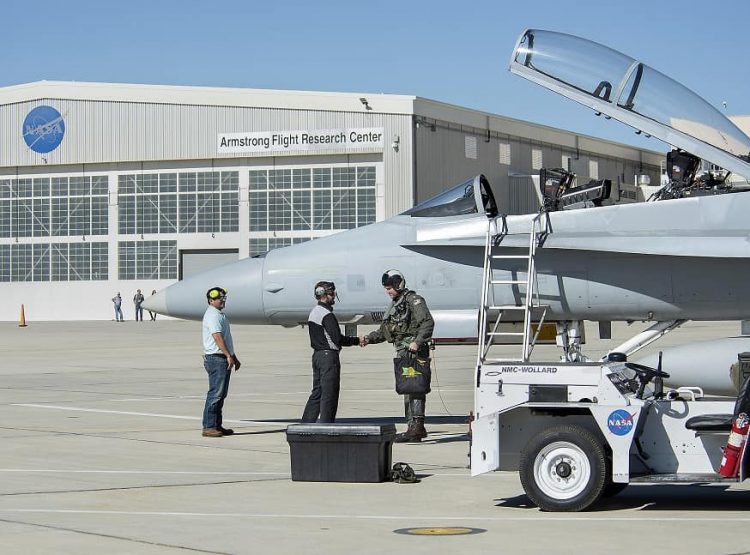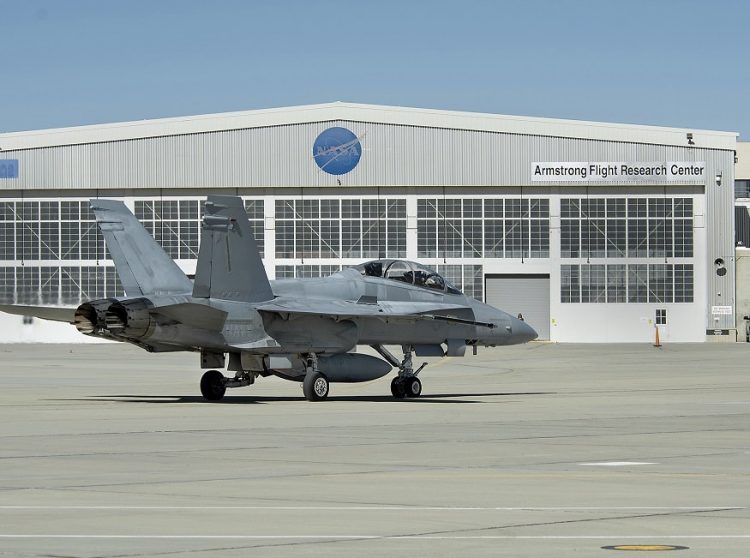First of three “new” F/A-18B Hornets arrived at NASA’s Center in California
Posted on
Scramble Magazine reported that first of three “new” F/A-18B Hornets arrived at NASA’s Armstrong Flight Research Center in California Nov. 6.
The Armstrong Flight Research Center in California uses F/A-18s as part of its fleet of research aircraft, to accompany other aircraft on missions as a second set of eyes and for pilot training. The B models are two-seat versions of the aircraft, not unlike Armstrong’s F/A-18B No. 846, that also fly photographers and videographers to document research missions.
Although the aircraft Armstrong is receiving are nearing the end of their service life for the Navy, some of the aircraft could have extended use for the center, as there are fewer flight hours on research and mission support aircraft than the frequent flight rates required for the military, said Tim Krall, an Armstrong flight operations engineer.
The first F/A-18B came from the U.S. Naval Air Station Patuxent River in Maryland, a two-day journey as a result of winds along the route. Lt. Cmdr. Mike Shelton made a stop overnight at Kirtland Air Force Base in Albuquerque, New Mexico, before reaching Edwards Air Force Base the following morning.
The second F/A-18B is also coming from the Naval Air Station and is expected to arrive in the coming weeks, Krall said. The third Hornet is coming from the U.S. Naval Air Joint Reserve Base in Fort Worth, Texas, in early 2019.
Armstrong pilots and support staff will assess the condition of the aircraft to determine if they might replace some of the center’s aging jets. Once the aircraft have been flown and evaluated, the best of the first two aircraft will begin preparations to join the Armstrong active fleet, Krall said. However, in order for the aircraft to fly missions, a phase maintenance is required, which usually takes a few months per aircraft.
Once the third aircraft has arrived and been evaluated, decisions will follow on how many of the aircraft will be active and which ones could be used to fortify parts supplies needed to continue flying the F/A-18Bs.
Another consideration for the new aircraft to be mission ready is for installation of research equipment from the current NASA F/A-18B numbers 850 and 843 in two of the newer Hornets. Additional evaluations within the Armstrong support fleet are needed to make that determination, Krall said.
The Hornets will retain the charcoal gray Navy colors for most of the next year, although the aircraft immediately receive their new tail number and a NASA logo. For example, the newly-arrived Hornet was here less than 24 hours before its new number, N868NA, was added. A NASA logo will also appear on the vertical tail soon.
Armstrong first became aware of the Hornets’ availability within the past year when the Navy announced it would be ending active use of a number of aircraft. The center expressed an interest in acquiring some of those aircraft and obtained a list of what would be available. From that list, it was determined that the F-18B best fit what the center needed and the process to acquire the three aircraft began, Krall said.
The arrival of the Hornets marks the first time since 2010 that the center has received three aircraft in the same time frame. The center was able to acquire three F-15D aircraft that year from Tyndall Air Force Base in Florida.


Subscribe to our newsletter
Promotions, new products and sales. Directly to your inbox.
